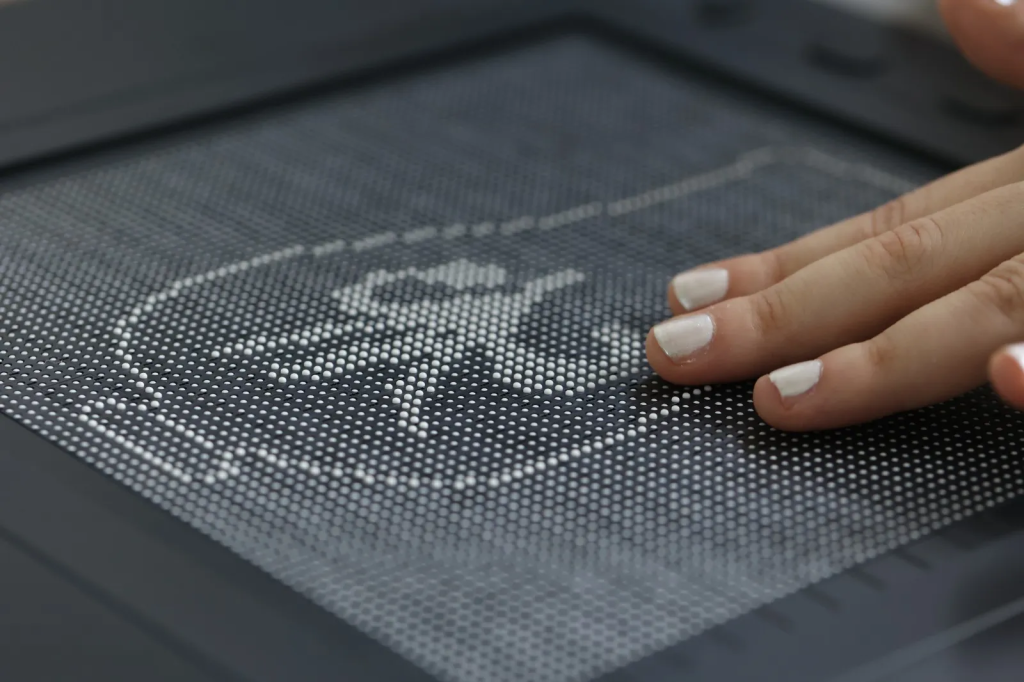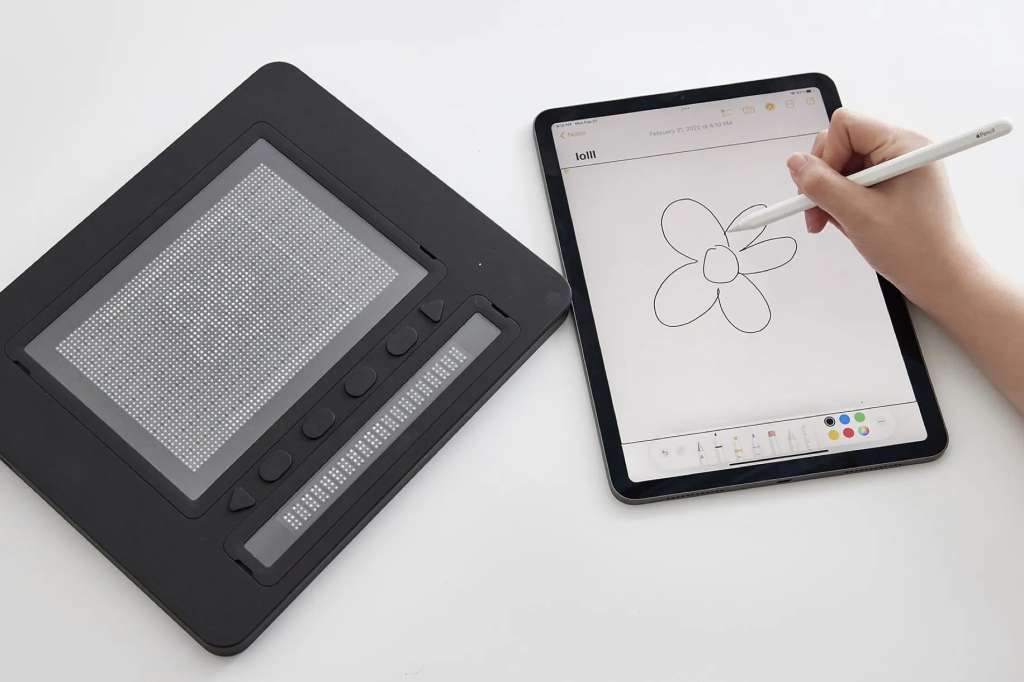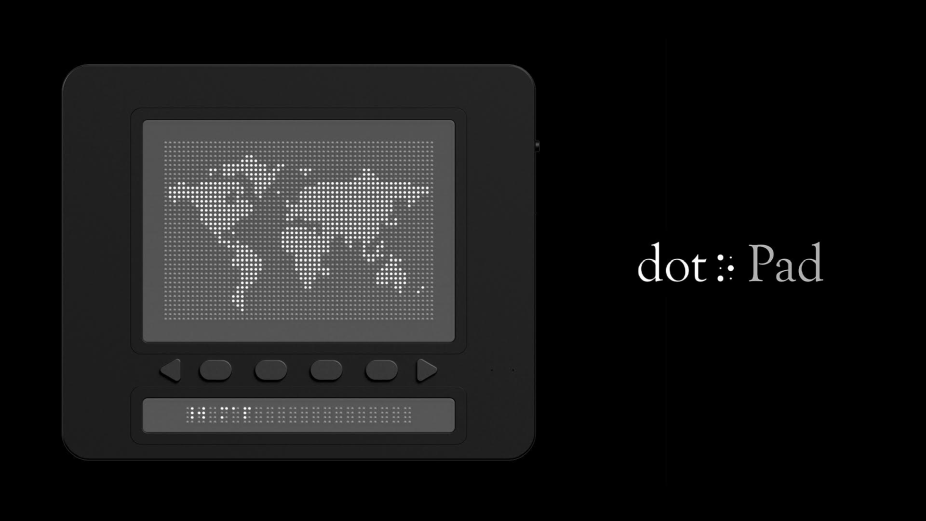Introduction
The Dot Pad, created by DOT Incorporation, is a braille device that translates digital visual content into tactile graphics in real time. This product is designed to enhance the experience of individuals with low vision or blindness and provide greater access to online visual assets in a society increasingly working or learning online and remotely.

Key Accessibility Features: Tactile Graphics Display
The Dot Pad’s display is an innovative technology that uses a grid of 2,400 retractable pins to depict tactile images translated through AI. This offers great utility for users with low vision or who are blind to access visual content such as images, graphs, and maps, which are typically taken for granted by individuals who can see. This addresses the social model of disability, which suggests that people with visual impairments have historically lacked access to visual content in a world that increasingly relies on visual aids and user interfaces. Additionally, the product aligns with the economic model of disability by granting users more access to productivity apps. This opens up the possibility of working in industries such as graphic design, music production, and photography which have traditionally relied on visual interfaces and may have previously been inaccessible.
Key Accessibility Features: Customizable Control and Exploration Elements
The Dot Pad features customizable buttons that can be personalized for a flexible experience when working with visual content on the device. Users can assign functions like zooming, panning, inverting, and rotating commands to the buttons based on their needs. This allows users to interact with tactile images displayed on the device according to their preferences. This approach supports the medical model of disability by empowering users to tailor the device to their needs and functional requirements. It also aligns with the biopsychosocial model as the customizable nature of the device enables users to experience new sensations, like touching and manipulating custom-generated tactile images in real-time, such as their own written signature. It also allows its users to experience new forms of content such as games, comics, and other capabilities not imagined yet.

Key Accessibility Features: Compatibility with Existing Technology
The Dot Pad is compatible with cameras, websites, apps, tablets, or phones and offers many capabilities. Most importantly, it is compatible with existing assistive technology, such as Apple iOS’s VoiceOver screen reading feature, which expands users’ ability to interact with visual content through a connected Apple device. DOT Incorporation also developed an iPad app called Dot Canvas, allowing users to print their drawings or write directly onto the Dot Pad in real-time. These design integrations represent the functional solutions model by demonstrating a startup company’s desire to design technological innovations in collaboration with larger technology companies to provide more accessible experiences to their collective user base of individuals with low vision and blindness.
Conclusion
The innovative technology of Dot Pad has the potential to greatly improve visual accessibility for people with low vision and blindness. Developers can further innovate by working with AxBrailleMap, an accessibility API by Apple, which supports displaying visual information. Developers are also working on a new tactile file format to enhance output on the Dot Pad.
The greatest accessibility obstacle to this product, however, is its affordability. The Dot Pad is seen retailing on the web for as much as $12,000. This high price makes it prohibitively expensive for individuals, businesses, and institutions. Efforts should be made to reduce the cost of producing and purchasing this assistive technology.
Sources:
